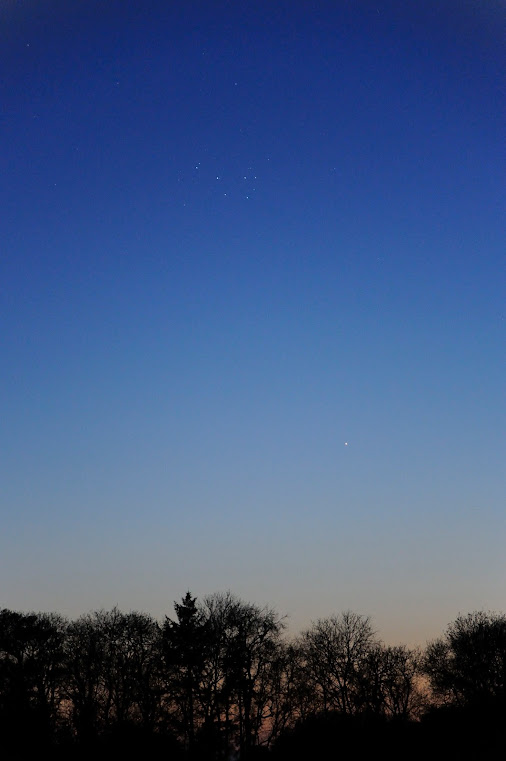Whilst we still have some dark skies before the moon interferes again, I thought I would try and monitor a different variable star. With some advice from the BAA I have decided to observe CH Cygni. The Variable Star Section says that this is a ZAND+SR type variable star with a magnitude range of between 5.6 and 10.5. According to my Norton's Star Atlas a ZAND star is a type of cataclysmic variable consisting of a close pair of binary stars where one hot star is exciting the envelope of a cooler one. Note that the abbreviation of ZAND comes from Z And, the first star of this type to be noted. These are also called symbiotic stars. I guess that the +SR means that the cool star in the binary is also a Semi Regular pulsating star. Unlike pulsating stars (of which Z and RY UMa and TX and AH Dra are examples) cataclysmic variables do not have a regular variation in their brightness, so their magnitude can alter from one night to the next in a chaotic fashion and can thus be observed on a regular basis.
The finder chart for CH Cyg 089.04 (pdf) can be found on the BAA's Variable Star Section website. The three stars that aid you to find CH are Theta, Iota and Kappa Cygni, which form the more northerly wingtip of the Swan. On the 3rd July 2022 I went out about midnight (BST) to search for CH using my 7x50 binoculars. It was relatively easy to find as it is not far from the star marked A on the chart. I could make out star F with my bins which meant that my limiting magnitude was fainter than magnitude 8.5. At 23:26 UT I estimated that CH was fainter than star A (magnitude 6.5) but brighter than star D (magnitude 8.0). I thought that the star was much closer in brightness to A than it was to D and to put it in numerical terms it was about one step from A and 3 steps from D, that is A(1)V(3)D. The difference in magnitude between A and D is 8.0 - 6.5 = 1.5 magnitudes. Dividing this by 4, each step corresponds to 0.375 mag., making CH 6.5 + 0.375 = 6.875 or 6.9 (to one decimal place). I verified this by comparing it to stars A (=6.5 mag.) and W (=7.3 mag.) finding it to be roughly between these two stars in brightness. We have that (6.5 + 7.3) = 6.9. This estimate compares favourably with other observations on the BAA database.
All text and images © Duncan Hale-Sutton 2022




